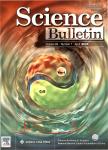Flashing light in sponges through their siliceous fiber network:A new strategy of “neuronal transmission” in animals
Flashing light in sponges through their siliceous fiber network:A new strategy of “neuronal transmission” in animals作者机构:ERC Advanced Grant Research Group at the Institute for Physiological ChemistryUniversity Medical Center of the Johannes Gutenberg UniversityMainz D-55099Germany
出 版 物:《Science Bulletin》 (科学通报(英文版))
年 卷 期:2012年第25期
页 面:3301-3312页
学科分类:0710[理学-生物学] 07[理学] 071006[理学-神经生物学]
基 金:W.E.G.M. is holder of an ERC Individual Advanced Grant (268476 BIOSILICA) supported by the German Bundesministerium für Bildung und Forschung (project “Center of Excellence BIOTECmar-in”) the Deutsche Forschungsgemeinschaft (Schr 277/10-1) the European Commission/EUREKA (EUROSTARS,4289-SILIBACTS) the International Human Frontier Science Program,the European Commission (244967-Mem-S,Biomintec 215507,Coreshell 286059,IRSES 246987,SPECIAL 266033,and BlueGenics 311848 Projects) the Public Welfare Project of Ministry of Land and Resources of China (201011005-06) the International S & T Cooperation Program of China (2008DFA00980)
主 题:sponges Suberites domuncula "nervous"-like signal system light transmission siliceous spicules luciferase cryptochrome
摘 要:Sponges(phylum Porifera) represent a successful animal taxon that evolved prior to the Ediacaran-Cambrian boundary(542 million years ago).They have developed an almost complete array of cell-and tissue-based interaction systems necessary for the establishment of a functional,multicellular ***,a network of neurons,one cell/tissue-communication system is missing in *** fact is puzzling and enigmatic,because these animals possess receptors known to be involved in the nervous system in evolutionary younger animal *** an example,the metabotropic glutamate/GABA-like receptor has been identified and cloned by ***,we have identified a novel light transmission/light responsive system in sponges that is based on their skeletal elements,the siliceous glass fibers,termed *** classes of sponges,the Hexactinellida and the Demospongiae,possess a siliceous skeleton that is composed of *** the large spicules from hexactinellid sponges(5 cm) revealed that these spicules are effective light-collecting optical *** we can report that the demosponge,Suberites domuncula,has a biosensor system consisting of the(organic) light producing luciferase and the(inorganic) light transducing silica *** light transmission features of these smaller spicules(200 μm) has been demonstrated and the ability of the sponge tissue to generate light had been *** for a luciferase gene in *** was *** the next step,we searched for a protein potentially involved in light *** a protein was identified,cloned and recombinantly expressed from *** protein sequence displays two domains characteristic of a cryptochrome,the N-terminal photolyase-related region and the C-terminal FAD-binding *** experimental data indicate that sponges may employ a network of luciferase-like proteins,a spicular system and a cryptochrome as the light source,optical waveguide and photosensor,***



